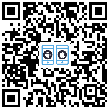


|
如果说有一件事是美国企业界几乎人人认同的,那就是传统的年度评估实在是浪费时间。经理和员工都为这一谈话过程所困扰,而且已有大量证据显示,除了制造一堆额外的纸质文件,评估没有任何意义。 软件制造商Adobe公司不再对员工进行年度绩效评估,并放弃令人讨厌的“末位淘汰制”,转而实施所谓的“核查制”(Check In)。此举收到奇效:离职的优秀员工大大减少,更多表现不佳的员工选择离开,最终推动该公司股价大幅上涨。 Adobe全球人力资源及设施部高级副总裁唐娜?莫里斯回忆道:“我回顾了从2011年至今的整个评估流程,产生的想法就是:‘这对我们有什么用吗?我们为什么要做这个?’” 尤其令人讨厌的是该公司的“末位淘汰制”。经理们必须找出并开除团队成员中效率最低的那些员工。这导致这家软件制造商内部明争暗斗、怨恨不断,每年都有一些最优秀的人才跳槽至竞争对手那里。 在部分采纳员工建议的基础上,莫里斯和她的团队抛弃了年度评估制度,代之以所谓的“核查制”。每个财年刚开始时,员工和经理会设立特定的目标。然后员工要至少每8周(通常频率会更高)与老板进行实时讨论,告知任务的完成进度。在一年一度的“奖励环节”,经理会根据每名员工完成任务或超额完成任务的情况,给予晋升或奖金。莫里斯表示:“经理在这方面有权做出决定。再没有什么‘模型’了,人力资源部门不参与其中。” 莫里斯表示,这种新方法需要经理接受额外的培训,他们需要调整日程,“空出设立期望并给予实时反馈的时间。”她补充道,一些国家的员工花了更长的时间来接受这种新制度。比如,Adobe在印度的员工“得知他们不用每年填写传统的‘工作报告’时,表现得十分焦急,直到他们意识到更频繁的对话能让他们时刻掌握自己的进度。” 莫里斯称,这种透明的制度带来了意料之外的效果。首先,尽管硅谷市场竞争激烈,对技术型人才的追逐十分疯狂,但流失的重要员工却比以前更少了。莫里斯表示:“那些拒绝其他工作机会的人告诉我们,部分原因是‘核查制’让他们觉得是我们帮助他们取得了成功。” 不仅如此,经理与表现不佳的员工更频繁对话,还造成莫里斯所说的“自然而然的,毫不可惜的员工流失”显著增多。她说:“这是因为团队领袖不必推迟与那些低效率员工进行强硬对话的时间。这种制度不只保留了人才,还保留了那些合适的人才。” 这种制度还提高了Adobe公司的股价。莫里斯表示,由于能得到实时反馈,每位员工都处于正轨,劲儿往一处使,这大大提高了1.3万名员工的工作效率。自“核查制”实施以来,Adobe股价从30美元涨到了80美元以上。(BT365的网址是多少) 译者:严匡正 审校:任文科 |
If there’s one thing almost everyone in corporate America can agree on, it’s that traditional once-a-year evaluations are a waste of time. Managers and employees dread the discussions, and plenty of evidence shows they don’t produce anything but a pile of extra paperwork. “I looked at this whole process, back in 2011, and thought, ‘Is this really doing anything useful for us? Why are we doing it?’” recalls Donna Morris, Adobe’s global senior vice president of people and places. Especially troublesome was that the company’s “rank and yank” system, which forced managers to identify and fire their least productive team members, caused so much infighting and resentment that, each year, it was making some of the software maker’s best people flee to competitors. So, based in part on ideas crowdsourced from employees, Morris and her team scrapped annual evaluations and replaced them with a system called Check In. At the start of each fiscal year, employees and managers set specific goals. Then, at least every eight weeks but usually much more often, people “check in” with their bosses for a real-time discussion of how things are going. At an annual “rewards check-in,” managers give out raises and bonuses according to how well each employee has met or exceeded his or her targets. “Managers are empowered to make those decisions,” says Morris. “There is no ‘matrix.’ HR isn’t involved.” The new approach has required extra training for managers, who have had to adjust their schedules to “allow for setting expectations and giving feedback in real time,” Morris notes. Getting used to the new system has taken longer in some countries than in others, she adds. Adobe’s employees in India, for instance, “were anxious at first about not having the old written ‘report card’ every year, until they realized that, by having these conversations much more often, they would always know exactly where they stand.” Morris says that transparency has paid unexpected dividends. For one thing, fewer valued staffers are leaving, despite the ferociously competitive Silicon Valley market for tech talent. “People who have turned down other offers tell us it’s partly because Check In makes them feel like we’re helping them succeed,” says Morris. Not only that, but more frequent talks between managers and underperforming staffers have led to a marked increase in what Morris calls “involuntary, non-regrettable attrition, because team leaders are no longer putting off having tough conversations with people who aren’t cutting it,” she says. “It’s not just about retaining talent. It’s about retaining the right talent.” It’s also about boosting Adobe’s ADBE -3.07% stock price. Getting feedback in real time, so everyone stays on track and is pulling in the same direction, has helped make Adobe’s 13,000 employees far more productive, Morris says. Adobe’s stock price has increased from about $30 to over $80 since Check In began. |
最新文章





